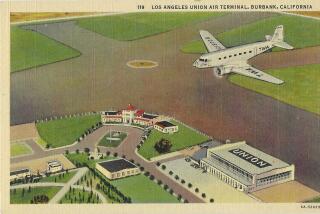Plenty of new airports but few passengers in China
- Share via
Reporting from Libo, China — It’s less than two hours before boarding time but most of the staff of Libo Airport are walking off their dinner of spicy dog meat with an evening stroll around the parking lot.
Others sit in a circle on a grassy median smoking cigarettes and marveling at a full moon. A security guard naps on a metal bench. A saleswoman behind the ticket counter enjoys a shoulder rub in the darkened terminal.
“Can you at least turn on the lights?” asks a traveler carrying a bag of snacks. “I’d like to see what I’m eating.”
Handling just two flights a week hasn’t fostered a deep sense of urgency for the 50 or so workers at the airport. On this night, a garage door-sized video monitor displays a single arrival and departure.
This is not how things were supposed to be when the $57-million airport opened in late 2007. Local officials were so confident that tourists would flock to this beautiful, mountainous county in southwestern China that they made the terminal big enough to accommodate 220,000 passengers annually, and built a runway capable of handling a 140-seat Boeing 737.
But only a few charters and budget carriers have established service here. A grand total of 151 people flew in and out of Libo last year.
At a time when anxiety is growing over the United States’ aging infrastructure, China is pouring billions of dollars into improving its transportation network to catch up with the developed world.
China has added about 40 airports in the last decade alone, bringing its total to 166. The U.S., by comparison, has 503 airports that serve at least 2,500 passengers a year, according to the Federal Aviation Administration.
But in the mad dash to expand China’s civil aviation system, many new airports are lacking one important thing: passengers.
Spurred by federal infrastructure money, easy bank loans and the cachet of having planes land in their backyard, many small cities jumped at the opportunity to lay down runways and open terminals.
“An airport is like a business card for the city. It can boost tourism and the economy,” said Xu Hongjun, a professor at the Civil Aviation University of China. “But a lot of small airports are not doing well. They need a lot of subsidies from the central government. They were too optimistic.”
Despite the building binge, the majority of China’s air traffic is still concentrated among a handful of large cities. The top eight airports commanded about half of all passenger traffic. The top three -- Beijing, Guangzhou and Shanghai’s Pudong -- handled half of all cargo traffic.
Experts say up to two-thirds of the nation’s airports are losing money. They must compete with a quickly expanding high-speed rail network whose tickets are often cheaper. Yet China plans to add 80 more airports over the next decade.
Officials believe the expansion will eventually pay off. China’s airline passenger traffic has grown an average of 15% annually over the last four years and is estimated to jump 44% over the next 10 years to 700 million fliers.
Last year China became the largest purchaser of jetliners on the planet, spending twice as much as the U.S. did on passenger planes.
“China has led the world in recovering from the global air travel slump,” said Richard Aboulafia, an aviation analyst for Teal Group in Fairfax, Va. “Its growth rates are the highest in the world.”
But some locations chosen for new airports have left even experts scratching their heads. Last year a facility was opened 13,000 feet above sea level on the steppes of the Qinghai-Tibetan Plateau, where temperatures can drop to minus-43 degrees Fahrenheit. Engineers had to temper the concrete runway just to withstand the harsh weather conditions.
Only 7,500 passengers used the airport last year.
“When can they make money? We’ve got a long way to go,” said Ping Wang, an advisor to the Civil Aviation Administration of China and co-founder of GCW Consulting, an aviation consultancy based in Arlington, Va.
“But an airport’s purpose is not just making money,” he said. “It’s a public utility. . . . Without small airports, many areas of the country won’t be connected to the outside world.”
The rest of the world still feels very far away in Libo (pronounced lee-BWAH), a city of about 166,000 in a mountainous region in Guizhou, one of the poorest provinces in China.
Even by rural Chinese standards, this place is a backwater. Roosters live in apartment courtyards. A sit-down restaurant means a stool on a dusty floor. Cows sometimes obstruct the airport road. Most young people have left for jobs in coastal factories. Coal mining and farming are the mainstays of the economy.
The airport was part of a development plan to attract more tourists to visit the region’s forest reserve, which was designated a UNESCO World Heritage site in 1996. The soaring rock faces and narrow peaks in the area resemble parts of the Grand Canyon, with trees.
But visitors rarely come, except during the country’s biggest national holidays.
“We were hoping the airport would bring more people here, but it has not been very helpful,” said Qin Zhengshao, 38, a farmer who turned part of his home into a guesthouse.
Peasants like Qin could never fathom traveling by plane. Tickets for the lone route to the provincial capital of Guiyang cost between $40 and $70 -- about half of what some farmers here earn in a year.
Airport officials are instead looking to attract more wealthy urban dwellers. Spokesman Qin Jungmeng said management has already secured more flights from southern Guangdong province.
In the meantime, airport employees have become accustomed to the light load. Though paid for full-time work, many have to come in only to attend to the airport’s two round-trip flights -- one on Friday, one on Sunday. When passengers do come, many turn out to be government officials, not tourists.
“This place just wasn’t promoted properly,” said one administrator who did not want to share her name. “It’s a shame because we really offer good services.”
Employees joke that the airport, which is situated on a lonely plateau, would be an ideal site for a horror film. Doors swing open and slam violently from the strong winds that roll off the hills, echoing through the halls.
On a recent Sunday night the staff prepared to celebrate the national lantern festival. Four cardboard boxes filled with fireworks were stored in an office ready to be set off later that evening.
First, however, there was the matter of an incoming flight. About an hour before its arrival the workers took their stations. A dozen staff members carrying walkie-talkies headed for the tarmac.
Fourteen minutes ahead of schedule, flight G42663 landed on Libo’s runway, an almond-colored strip of concrete noticeably unscarred by tire marks. The 50-seat Canadair CRJ taxied toward the terminal and came to a halt. When the door swung open, two women descended the stairs, followed by one male passenger.
That was it. The employees of Libo Airport could soon call it a night and enjoy their fireworks show.
Nicole Liu and Tommy Yang in The Times’ Beijing bureau contributed to this report.
More to Read
Sign up for The Wild
We’ll help you find the best places to hike, bike and run, as well as the perfect silent spots for meditation and yoga.
You may occasionally receive promotional content from the Los Angeles Times.







